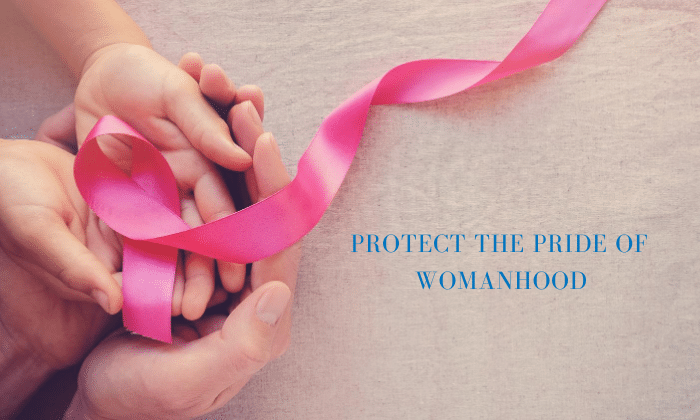INDIAN SCENARIO
“My mom, a gynaecologist, had a very close friend. She too was a doctor. We were very close. Suddenly, one day she was diagnosed with carcinoma breast (stage 3). Her disease was invasive and rapidly progressing. Even after aggressive treatment we could not save her. She was erased from our lives way too fast. This traumatized my mom and my whole family too.”
This got me into thinking how we could have saved her???? Being a doctor, she could not identify her lump in an early stage. Lack of awareness???? Lack of effective screening protocols??? Inhibitions around breast discussion? That incident turned out to be an eyeopener to me and I decided to create public awareness amongst our gender.
Carcinoma breast was more common in western countries. Nowadays, there is a sharp increase in incidence in India as well. According to ICMR there is more than 30 % rise in incidence of carcinoma breast. PBMR registers cancer as the second most common (rural data).
Age: Incidence of carcinoma breast is more common > 60 yrs.
In India there is an increasing number of cases being reported below 40 yrs.
Screening refers to identify breast cancer in a normal woman.
Normal women refer to one who doesn’t have signs and symptoms of cancer.
In Indian scenario concept of screening has to be strongly driven into each and every woman. Early detection is the only way to improve outcome and prognosis. In India
- Increase in incidence compared to west
- No awareness
- No effective screening
- Poor resources
- Low- and middle-class people
- Uneducated women
- Insecurity to talk about breast
- Fear to lose her breast / disfigurement
Why do we need to diagnose early?
Usually for a woman to feel a lump in her breast its almost > 2 cms that corresponds to stage 2. If we can identify a mass / lump in stage 1 which improves outcome and survival, breast conservation surgery is possible.
Who needs screening?
It can be routine or more targeted.
Routine – > 20 yrs.
Targeted – high risk / above average risk
Routine screening for all women above 20 yrs. mandatory
It is best to team up with friends, neighbourhood and relatives. Women of same age group screening will relieve stress, can be motivational, encouraging and supportive to each other.
Protocol: 20 – 40 yrs. normal risk
- BSE ONCE A MONTH (Breast self-examination)
- CBE once in a year (clinical breast examination)
- Breast awareness
Whom to go?
- Any physician who has good knowledge about cancer breast and its screening
- Can suggest appropriate investigations
- Able to read the reports and advise accordingly
- Female doctor could be a boon – more comforting and supportive
What is BSE?
Breast Self-Examination (BSE) – Examination by woman herself.
How often to go?
Once in a month at the end of menstrual cycle would be ideal.
Can be done in standing position, while bathing with four fingers rolling against her chest wall to feel for lumps, irregularities etc.
Every woman should be accustomed to the way their breast feels on palpation. this will make them identify any abnormality at an early stage.
Caution: Don’t hold your breast between your fingers and thumb, it always feels like a lump.
When to consult a doctor?
- Palpable lump
- Irregularities
- Nipple retraction or puckering
- Dimpling of skin over breast
- Discharge per nipple
- Any abnormality women can palpate and concerns her other than her normal feel of her breasts
Discussing with a physician is always a good option
CBE:
- <40 yrs. once in 2-3 yrs. in normal to low risk woman
- >40 yrs. once in a yr. in normal to low risk women
USG / MAMMOGRAPHY – What to choose?
Usually, mammography is not advised in women < 35 yrs.
USG of the breast can be done in such women.
Mammography or USG is usually advised by your consulting doctor.
>40 yrs. mammography is advised every year.
Dense breast?
Breast which has more fat than breast tissue per se. Usually noted in middle aged women, mammography is not very much informative in those cases as small lesions could be missed. If you are diagnosed to have dense breasts, USG will be advised by your doctor.
Breast is the symbol of womanhood and motherhood which are considered to be precious. Be proud of your femininity and join hands to protect that. Early detection of cancer breast helps in overall treatment outcome and prognosis. This is possible with effective screening protocols and awareness. Spread the awareness among your sisters, friends and other women. Together we can make a difference.
Concerns:
Being diagnosed to have breast cancer is personally a traumatic incident. women might have many concerns apart from the routine surgical management and adjuvant chemoradiation.
Will treatment cause breast disfigurement?
Treatment might or might not cause breast disfigurement. There are several options of breast conservation surgeries which are possible if cancer is diagnosed at a very early stage.
Will I lose my breast?
Not always. Even if complete breast is removed for disease clearance, there are several procedures possible for reconstructing breast tissue. Excellent reconstructive options can be given by plastic surgeons like me.
Being a woman myself, I know how difficult this journey could be for you and your family. Together we can make it happen. For any concerns, queries or discussions please feel free to come forward for consultation.
Contact:
Dr. Suma Sandhyala
Consultant Plastic, Cosmetic and Reconstructive Surgeon
+91 8686042042
info@prettyu.com

